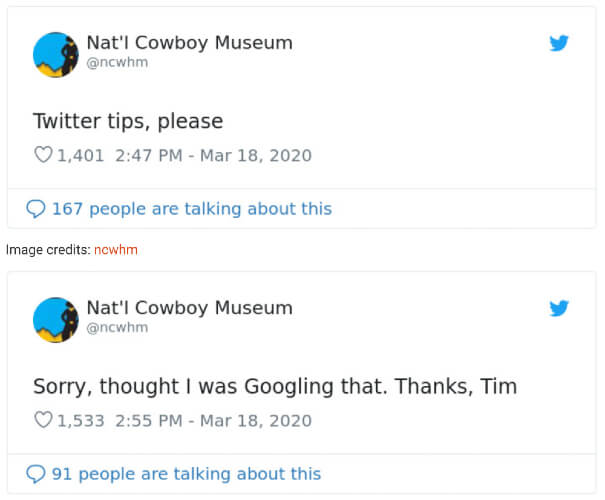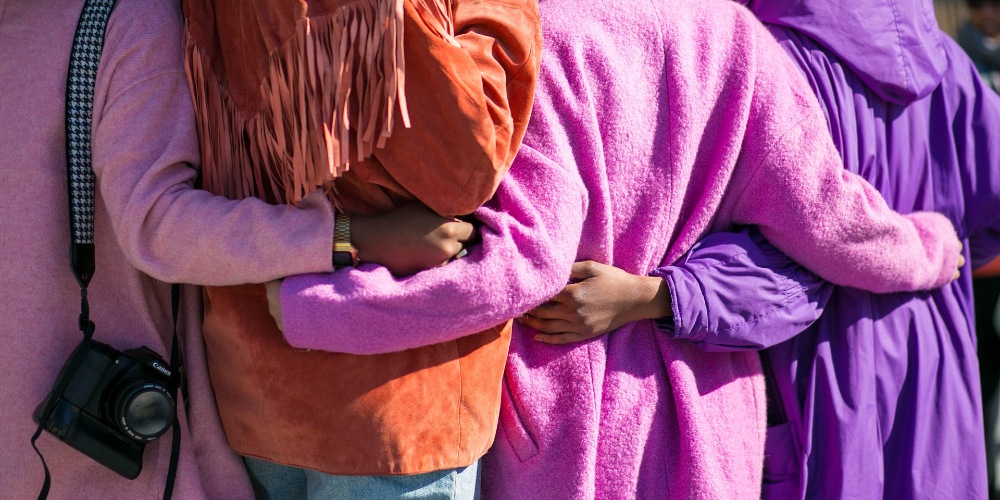In the midst of an unprecedented, large-scale national or even global crisis, it’s hard to know what to do as a marketer. Do you change your messaging and tone? Do you inform your audience, or leave that to others? What are the rules? How do you help without going bankrupt?
COVID-19 is causing disruption in every corner of life. No matter what industry you’re in, you’ve likely been affected in some way. And when people are under mandates to stay indoors, it’s crucial for you, your influencer partners and your brand to continue to communicate with your audience so they know you’re not just engaged, but also that you care about them as individuals — not just as profit.
“Bloggers and influencers are perfectly positioned to connect with their audiences in a trustworthy, personal way,” says Valerie Mitchell, the foodie behind Mama Likes to Cook. “We know what works for us and the people who follow us, so we can tailor messaging in effective ways.”
1. Check On Your Influencer Team — How Are They Doing?
There may be some unique opportunities to connect with new influencer partners during this crisis depending on the kinds of campaigns you’re running. But don’t let your current influencer partners fall to the wayside in the process.
Communicate with them to make sure your relationship is still going well, and then work together to create messaging that makes sense for this time and their audience.
Your brand and your influencers are in this together. You rely on each other to survive in crises like this. Make sure your influencers know you’re there for them and think of your partnership as a relationship — not just a transaction.
But prioritizing your partners goes further than that — it means prioritizing the welfare of your influencer partners. Check in on them. How are they faring during this crisis? Are they healthy? Safe?
Taking the time to strengthen your relationships with your current influencer partners will go a long way after the crisis is all over.
2. Help Your Influencers With Causes They Care About
One way you can stay involved during the crisis is by helping your influencer partners support the charities they and their audiences care about. This doesn’t mean picking a random charity for a cookie cutter campaign — it means listening to what your influencer partners care about and directing your time and energy accordingly.
There are many ways to pull this off, like running a promotion or charitable campaign and sending the profits to a charity your influencer partner cares about. You could even host a remote event, like Courtney Brandt, a Perlu advisor and the travel and foodie influencer of A to Za’atar.
“[We’re doing a] virtual happy hour,” she says. She and a friend — a wine expert and sommelier — are partnering with a local alcohol seller to provide wines and talk to the community about what they’re drinking. Their goal? To drive sales and engage with their audience, yes — but also to make people feel a little less alone.
Looking for Ways to Help During COVID-19?
Find Influencers Who Care as Much as You Do
3. Tap Your Influencer Team to Brainstorm New Ways to Connect
If you’ve been working tirelessly on a new product, having to halt the launch can be heartbreaking. However, right now, new releases and launches of new products can seem incredibly tone deaf. The tone for a launch is typically exciting and fun, but right now, people are not feeling either of those things as much as usual.
Instead, try to think of things you can offer that are genuinely helpful for your audience. Or, if you already have a product that could prove helpful during the crisis, work with your influencers to show your audience how to use that product or service during this unprecedented time.
And remember that “helping” is a broad term.
“[Helping might include] free products, but that could also mean supporting medical professionals, etc.,” says Brandt. “I think audiences want to connect and support brands that are helping those on the front lines.”
Whether you’re making masks or offering free products to help your audience find some joy in the midst of a crisis, use influencers to get the word out. They may even have fresh ideas on how their specific audience could use your product in a unique way.
4. Meet Your Customers Where They’re At During the Crisis
Many brands make the crucial mistake right out of the gate of either disengaging or continuing their campaigns as usual during a crisis. But crises provide a new opportunity for influencers and brands to connect with audiences on a more personal and specific level.
During a global crisis, audiences want two things:
- They want to know that your brand is paying attention to how the crisis not only affects you and your business, but your audience’s lives as well.
- They want to know you are paying attention to their current needs and are willing to meet them where they’re at right now.

Influencers are helpful in illustrating to the general public that you are knowledgeable, informed and engaged. They can humanize your brand and help your audience see that you’re just like them — that neither your brand nor your audience can carry on with business as usual.
“I think it’s crucial for both brands and influencers to normalize what we’re all going through as much as possible,” says Brandt.
Open forms of dialogue and communication are imperative, Courtney says. If you don’t take the time to connect with your audiences during a time like this, people will remember. Brands are already coming under fire for how they’re handling the crisis — you don’t want to be on the bad side of history.
5. Step Out of the Limelight but Stay Involved
During this crisis and others, you want to be in the conversation, but not be the conversation. This means reminding your audience and customers that you’re there for them without making too much noise about yourself.
It’s a difficult line to walk, and that’s why your influencers are so important. They help bridge the gap between you — who your audience could view as a “company” with less regard for them as a person — and your customers.
Don’t Stand on the Sidelines During a Crisis
Bridge the Gap by Partnering with Influencers
“I’m using my platform to help get the word out about restaurants I care about,” says Brandt. “This is an unprecedented time for the F&B industry around the world, and if I can support them by keeping chefs and teams in the public conversation, I will.”
In Dubai, where Courtney Brandt lives, restaurants have closed. Brandt is helping out by featuring local restaurants and showcasing those who are delivering — all at no charge.

“Honestly, it’s been great to see people come together and try and support this industry,” Brandt says. “I’m doing this because it’s important to me, and I’m sure other influencers have something that is equally (and authentically) significant to them.”
And be creative! Some people are bored at home. Small business owners are trying to stay alive. Parents who are suddenly homeschooling are stressed to the max. This means they’re actively seeking out everything from entertainment to ease boredom or helpful content to alleviate their current worries. And with large gatherings and crowds prohibited? Influencers are one of the best ways for audiences to view content.
It’s a great time to innovate, as the National Cowboy & Western Heritage Museum recently found out when they turned their security guard, Tim, into an influencer, only for their Twitter to skyrocket to national fame and nearly 276K followers, all due to Tim’s sincerity and charm.
Instead of leaving their Twitter to gather dust, they used it as a tool to continue connecting with their audience.
This kind of innovative influencer campaign is very timely and relatable. And using influencers, who are real humans like Tim, is the best way to make those campaigns feel authentic.

Instead of pushing for people to make purchases right at this moment, simply focus on remaining in their minds as the social distancing continues. If the situation normalizes, people might even be more keen to shop online, which puts you in a great position. Basically, it’s all about the long game right now.
6. Use Influencers to Connect With People (Including Your People)
During a crisis, especially one as large as COVID-19, your top priority should be helping others. This doesn’t mean ignoring business matters; revenue is obviously important to keep your brand afloat in difficult times. But during uncertainty, audiences want to engage with brands that genuinely care about their needs and offer solutions to their current problems.
“I have … multiple blogs,” says Mitchell. “Each of us is unique, but my followers don’t need me to address the pandemic directly. They know their own stresses and are overwhelmed, but don’t need me to cause them further stress. They come to me for solutions — fun crafts and activities to do at home, new recipes to try using food that is available, ideas for movies, books and other home entertainment, links to good sources for online ordering … I am not going to use scary words on my sites, but I do provide timely information that is helpful during these very difficult times.”
But prioritizing people goes beyond helping your customers. It also means helping your employees.
Now is the Time to Prioritize People Over Profit
“I think as much as brands can do to help individuals, the better, but I think it’s also important to show that brands are taking care of their employees first,” says Brandt. “I would like to work with companies that have a holistic approach to what’s going on in the world.”
As something closer to peers, influencers are an ideal way of conveying this message of empathy and respect to your customers. In fact, influencer marketing is the most “human” marketing you can implement during a time of crisis.
“People will remember,” Brandt says. “Months from now, I think brands that engage with people, look after their employees and try to do the right thing as much as possible will be remembered by consumers.”

This message can be really challenging for brands to convey, but influencer marketing is one of the best ways to accomplish it. Influencers are perhaps your biggest tool for addressing crises in an authentic, informative way.
“I am doing my part to keep my family safe and to be a good resource for my blog readers and social media followers,” Mitchell continues. “So, yes, please email pitches — lots of them!”

